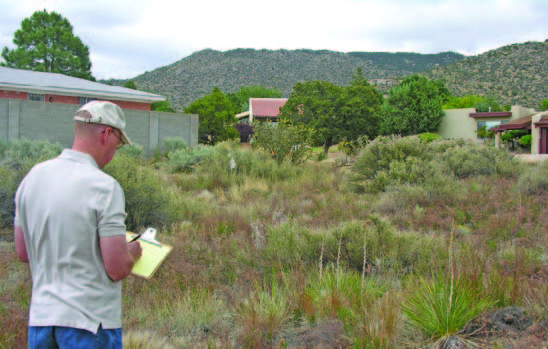The PermaDesign Weblog, with Nate Downey and Melissa McDonald!
Roof-Reliant Landscaping™ Step 12B: Planning and Designing PHASE 2: Evaluating Your Site

The second step in the landscape design process is site evaluation. This consists primarily of observation and research.
Observation
Below is a list of environmental factors that are important in landscape site evaluation. Take this list out on your property at different times of day and during different seasons of the year to observe and take notes about these items. Many of these factors combine to create microclimates, the small areas in your landscape that have different growing conditions than those that exist on your property as a whole.
• Moisture. Where does the water fall from your roof? Where does moisture remain after a heavy rain?
• Wind exposure. What direction do winds typically come from? Is there a time of day and/or a time of year when the winds are extremely strong and persistent?
• Temperaurest. Where are the hottest and coolest spots on your property? Determining the location of hot and cool temperatures on your land will help when it is time to decide which plants should be placed where.
• Shade and light. How far does your house cast its shadow on the north side of your house during the winter solstice (December 21st)? How does that shadow differ from that of the summer solstice (June 21st)?
• Slope. How will the slope of your property affect where a cistern might be located?
• Vegetative cover. How can you use the existing vegetation on your property for the benefit of your future landscape? What plants might need to be transplanted to another part of the property?
• Wildlife habitat. Which aspects of natural wildlife do you want to encourage and/or discourage in your landscape?
• Use and traffic patterns. Observe and predict the human activity that is likely to occur on your property.
•Views and privacy. What views do you want to protect? Landscaping can be very effective at enhancing beautiful vistas and hiding ugly views, and it can also be critical in creating privacy.
Research Studying your site also requires gathering public information about your specific region and your particular property. Your research should include information provided by landscape professionals, surveyors and government agencies; it can also include many other sources of information such as family, friends and neighbors, especially those who have lived in your community for many years.
Topics to be included in your research at this point in your design process include:
• Locations of utility lines
• Property lines and easements
• Restrictions on development
• Permits
• Soil types
• Frost dates
• Frost depth
• Flood potential
• Wildfire potential
• Local plant palette
10/23/2015 | (0) Comments










Comments